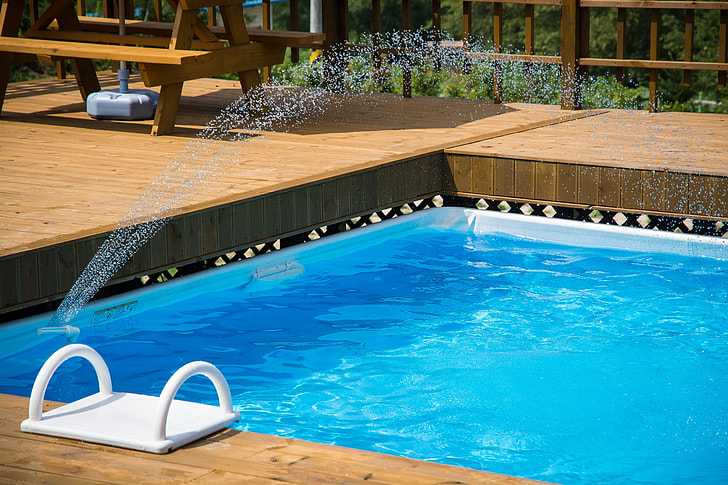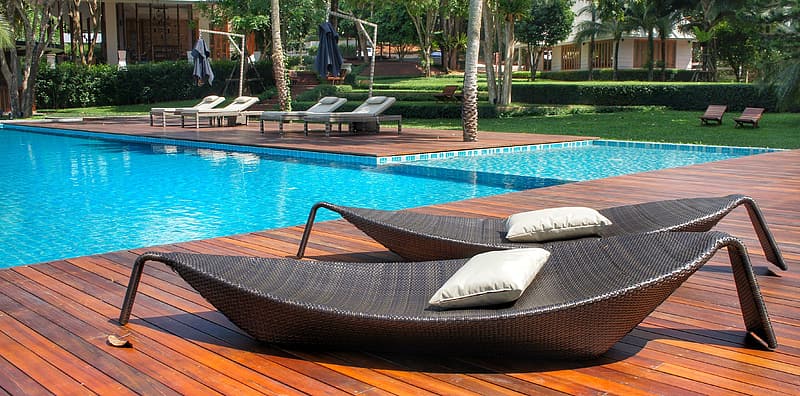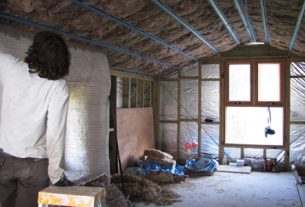Summary
Part 1:
– Focus on the wood used for swimming pools
– Step 1: Clean the wood structure of your pool
Part 2:
– Step 2: Degrease the wood
– Step 3: Feed the wood with a saturator
Swimming pools with a wooden structure are very fashionable. They have undeniable aesthetic qualities, combining the beauty of a noble material with the appeal of water.
In principle, they are made of rot-proof wood or wood that has been treated to become rot-proof and are naturally resistant to the elements. If they require regular maintenance, it is mainly for aesthetic reasons.
Under the action of UV light and the weather, the wood of a swimming pool, whatever it is, loses its shine and tends to turn grey. These phenomena are normal and proper maintenance will restore your pool to its beautiful natural wood colour.
Here are the steps to follow to maintain a wood-frame pool.
Focus on the wood used to make pools
Intended to be frequently sprinkled with water, the wood used to build a wood-frame pool must above all be rot-proof. There are two categories of wood:
– Naturally rot-proof wood species, such as teak, iroko, doussié, dark red meranti, green ebony, red cedar…
– Conventional species, mainly pine, treated in an autoclave to become rot-proof: the wood is then impregnated to the core, using a specific process of pressure injection of a fungicidal and insecticidal substance. It is then labelled class IV.
In both cases, the wood used is resistant to humidity, wood-boring insects, and fungi: at no time is the treatment necessary to prevent it from rotting if it is indeed class IV (autoclave treatment) or class V (most exotic species) wood.
Namely: wood sold or used in construction, whether for swimming pools or others, is classified into 5 categories, from I to V according to the NF EN 335-2 standard: from class I suitable exclusively for interior use, to class V suitable in a marine environment, in permanent contact with seawater. Class IV corresponds to outdoor wood subject to frequent or permanent humidification.
Therefore, make sure that the wood in your pool is class IV or V. Unfortunately, there are still a few manufacturers offering class III wood pools: in this case, there is not much to do, except to turn you against the seller if you notice that the wood is rotting.
1) Clean the wooden structure of your pool

Under the action of splashes, plant pollution and soil projections, the coping stones, beaches and even the outside walls of your wooden pool get dirty.
A good cleaning is then necessary.
Clean the walls of the pool
There is no fixed periodicity to be respected, clean when the need arises by proceeding as follows :
– Add a little liquid black soap to a bucket of water, otherwise, a squirt of dishwashing liquid will do the trick.
– Arm yourself with a quackgrass brush soaked in soapy water and scrub to remove the deep dirt.
– Rinse thoroughly with a water jet.
Note: If you have a pressure washer, you can use it instead of brushing. Set it to moderate pressure.
Clean wooden curbstones and decks
– Spray frequently with a garden hose to remove most of the pollution.
– From time to time, clean more thoroughly with a brush and soapy water or with the pressure washer.
– Rinse with a jet of water very thoroughly to prevent a soapy residue from making the coping stones slippery.
This post will now continue in part 2 to tell you how to proceed further by removing grease from the wood and how to feed the wood with a saturator.
Stay posted and remember to comment and share.




1 thought on “How to Maintain a Wooden Swimming Pool (Part 1)”